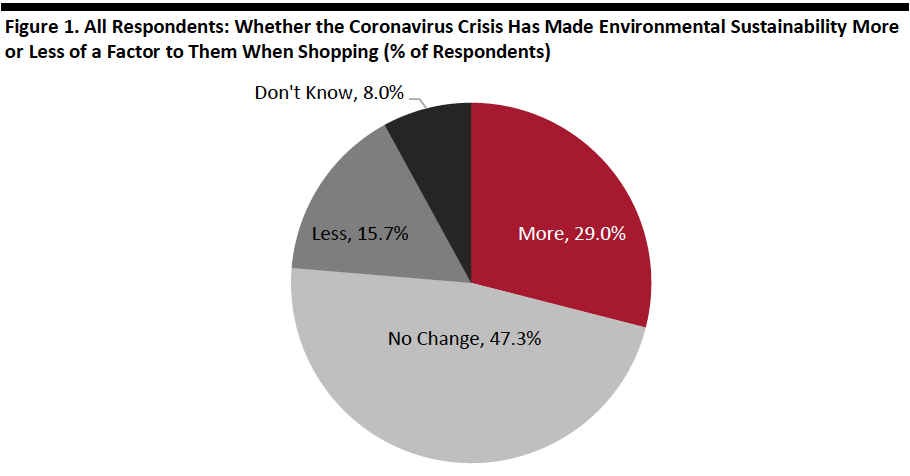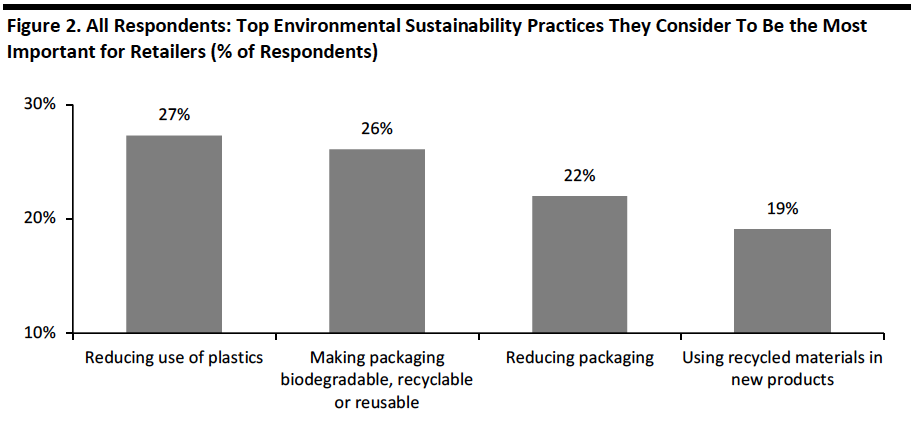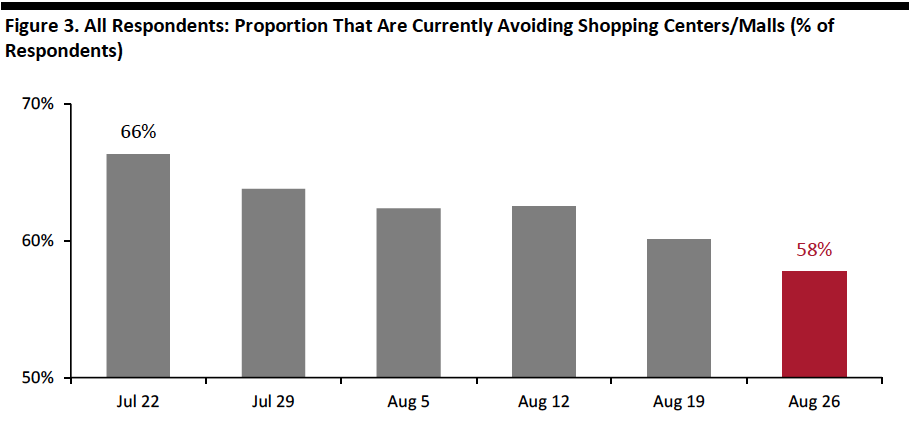
albert Chan
We discuss select findings and compare them to those from prior weeks: August 19, August 12, August 5, July 29, July 22, July 15, July 8, July 1, June 24, June 17, June 10, June 3, May 27, May 20, May 13, May 6, April 29, April 22, April 15, April 8, April 1, March 25 and March 17–18.
1. Three in 10 Said the Crisis Has Made Sustainability More of a Factor When ShoppingThis week, we asked consumers about their attitudes toward environmental sustainability in retail, including any impacts of the Covid-19 crisis.
A substantial proportion of US consumers have become more focused on sustainability in their shopping journey due to Covid-19: Some 29% of respondents said the pandemic has made environmental sustainability more of a factor when shopping. This compares to 16% that stated that the crisis made sustainability less of a factor.
Among those who said the crisis has made sustainability more of a factor, the number-one reason cited was that consumers have reflected on what is most important amid the pandemic, followed by the lockdown showing the immediate impact of changed behaviors on the planet.
Among those who said the crisis has made sustainability less of a factor, the main reason is that other things have taken priority, such as avoiding the virus and saving money.
Despite a meaningful proportion of consumers valuing sustainability more because of the crisis, the highest response in terms of the impact of Covid-19 on sustainability in purchasing decisions was nevertheless “no change.”
- See our full report for complete results of consumers’ attitudes toward sustainability in retail and the impact of Covid-19, including which retail categories respondents believe need to be more sustainable.
 Base: US Internet users aged 18+
Base: US Internet users aged 18+Source: Coresight Research[/caption] 2. Reducing Plastics Is Considered the Most Important Sustainable Practice for Retailers
We asked consumers what they consider to be the most important sustainability issues for retailers. Reducing plastics took the lead. Packaging is a huge concern for consumers in terms of sustainability. Making packaging biodegradable, recyclable or reusable was ranked the second-most important sustainability action for retailers, followed by reducing packaging.
In general, consumers seem more concerned with the issue of product and packaging disposal for the end-products they can see than the supply chain impacts that they don’t see, such as the use of chemicals, use of water and carbon emissions.
- Consumers could pick up to three options or “no preference,” potentially depressing the total percentages.
 Respondents could select up to three options or “no preference”
Respondents could select up to three options or “no preference”Base: US Internet users aged 18+
Source: Coresight Research[/caption] 3. A Gradual Declining Trend in Avoidance of Shopping Malls
This week, the proportion of respondents saying that they are avoiding any public area was broadly level with that of last week, at around 80%. However, we saw slight decreases of avoidance in almost all of the 12 options we provided:
- The proportion of respondents that are currently avoiding shopping centers/malls slid slightly again this week, to 58% this week, compared to six in 10 last week. Although shopping malls remained the most-avoided places among consumers, we have seen a gradual declining trend in the avoidance rate, which has dropped by roughly eight percentage points from the peak of two-thirds on July 22. In a separate survey question, we found that the proportions of consumers visiting open-air and enclosed shopping malls in the past two weeks both increased slightly.
- The proportion of respondents that are currently avoiding food-service locations fell back by almost six percentage points to the lowest level we have seen since June.
- Entertainment and leisure venues saw the highest decline in avoidance rate this week, of almost seven percentage points.
 Base: US Internet users aged 18+
Base: US Internet users aged 18+Source: Coresight Research[/caption]